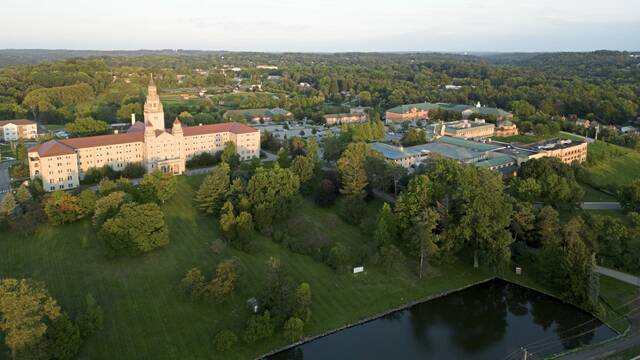In 1753, George Washington, at age 21, was sent on a historic mission by the Governor of Virginia to take a message to Fort Le Boeuf in Erie. He hired Christopher Gist, a surveyor and an experienced wilderness traveler, as his primary guide, as well as six others. Washington and Gist kept travel journals. From these notes, we know that three Native chiefs and a young hunter named Guyasuta also accompanied them to ensure safe passage.
The 12 men left from George Croghan’s Logstown Trading Post, at the intersection of Big Sewickley Creek and the Ohio River, on Nov. 30, 1753. They probably took the trail up today’s Big Sewickley Creek Road to Warrendale Bayne Road and Franklin Road, through McCandless and Pine, to get to “Murdering Town” (Evans City area).
Traditional maps of their return trip show them following the same road back, but I believe Washington and Gist, who traveled on foot some of the trip home because their horses could not make it through the deep snow, did not return the same way. New evidence and careful attention to detail shifts their path through a section of Butler and Richland.
Washington wrote that at Murdering Town, “we intended to quit the path [Franklin Road] and steer across the country for Shanapin’s Town.” Shanapin’s settlement was in Lawrenceville, and the river’s swift current made Etna the best point for crossing it.
After a native shot at them a couple of miles from Evans City, Washington wrote that they “walked all the remaining part of the night without making any stop,” from 9 p.m. on Dec. 27 until the morning of Dec. 28. Gist wrote, “we set out a half mile … set our compass … and in the morning we were at the head of Piney Creek.”
That is about 11 miles in about 11 hours. Normal long-distance hiking speed is 2 mph in good conditions, 1 mph in deep snow.
People have assumed that the beginning of Pine Creek in Wexford was the “head” Gist referred to. But in geological terms, the beginning of Pine Creek is the “source,” while the “head” is short for “headwaters,” the small streams that feed into larger ones. The headwaters of Pine Creek are North Fork, Montour, Willow and Crouse runs. The only one named in 1750’s maps was Montour Run, likely the main headwater. The highest end of Montour Run’s watershed is at Bakerstown Road (then known as Packsaddle Trail). This places them somewhere around North Montour and Valencia Roads, or Grubbs and State Roads.
Montour Run and Pine Creek roughly parallel to Shannopin’s Trail, which cut straighter than the many meanders in the streams. The trail ran between Evans City and Etna. It followed the ridge heading south-southeast out of Evans City, then eventually to Hardt, Banks School, Josephine, West Hardies, Wildwood-Sample and Sample roads, then Mt. Royal Blvd. to Etna. Most historians have assumed that they followed the creek, right by its banks, but that would have taken them longer than their timeline allows.
The official GW Trail Committee is leaving the trail as is despite these facts. For purists like myself who want the closest path that one could ascertain from the journal clues, 1750’s maps and a timeline consistent with about 1 mph travel, I am confident Washington and Gist found the SSE trail through Richland, Hampton, Shaler and Etna. Crossing the Allegheny River, they used the strong river current to angle themselves to Shannopin’s (Lawrenceville).
For more information, see the Richland History Group Facebook page.








